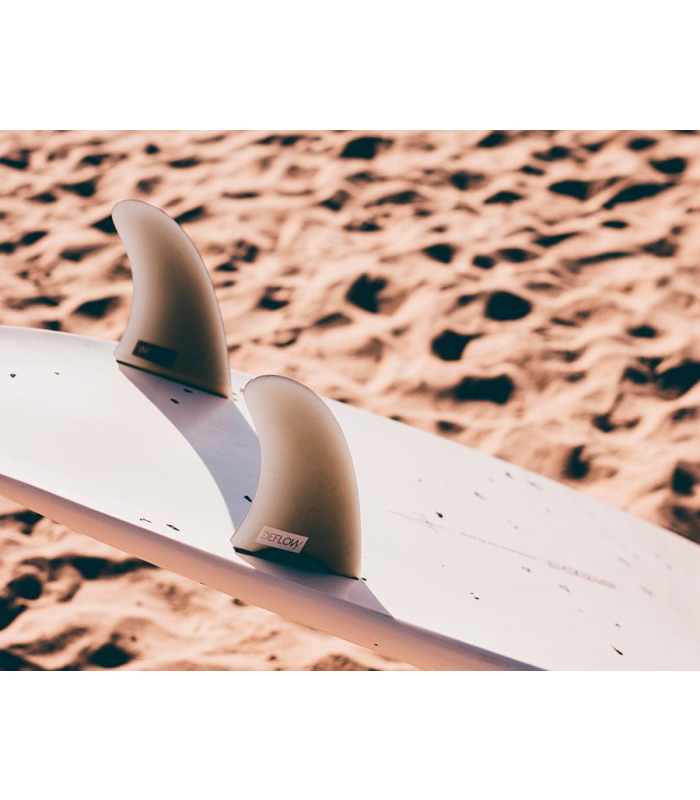
Futures Fins is a prestigious brand of surf fins. In this guide we will show you the key aspects that affect the performance of futures fins, from area and base to camber and foils, as well as concepts such as flex. Whether you are a novice or experienced surfer, this futures surf fin guide will provide you with the knowledge you need to choose the right futures fins for your style and level of surfing.
Cheap Futures fins
This is our favorite futures fins . This futures fins, manufactured in Huntington Beach, and belonging to the Alpha product line that combines Bureo’s NetPlus recycled fishing nets with Futures’ Compound 6 (C6) carbon and air infusion technology. Maximum versatility and possibilities in fin configuration for your board.
Futures fins guide
When buying a set of Futures fins you should pay attention to the Ride Number that the brand indicates on each of its sets.
What is the Futures Ride Number?
Using the Ride Number is easy, you just have to understand the Speed Generation and Speed Control sensations.

At one end of the Ride Number scale are the Speed Generation fins. These fins feel responsive and provide that extra boost often sought when waves are underpowered.
At the opposite end of the scale are the Speed Control fins. These fins feel solid, engaged and predictable, offering extra grip that is usually only needed when the waves are powerful.
The middle ground is the Balanced, offering a blend of the two extremes for a complete feel.
Just remember, when you’re pumping: Speed Generation, when the waves are powerful: Speed Control.
HOW TO CHOOSE FUTURES QUILLS according to your weight
To choose the correct fin size you should look at your weight. Futures fins recommends:

- Size XS: for surfers weighing between 34kg – 52kg
- Size S: for surfers weighing between 47kg – 70kg
- Size M: for surfers weighing between 65kg – 88kg
- Size L: for surfers weighing more than 75kg
FUTURES FINS CHARACTERISTICS
In a surf fin we can distinguish: area, base, slope and profile.
Area
The more area, the more grip the fin will have. The size of the fin is crucial depending on the weight of the surfer. Area is the most important number to consider when determining fin size. See the fin sizing chart above.
Base
The larger the base, the more momentum the fin will have in bottom turn maneuvers. The base is an important aspect of the area. Increasing the base will make a dramatic difference in the momentum you feel on your bottom turns. If the board feels stiff or hard to turn, try a smaller base fin.
Speed generation vs. speed control
The speed-generating, speed-controlling or balanced feel of fins is based on the weighted effects of flex, rake and foil. Below we explain what each of these characteristics consists of: Flex (flex), Rake (rake) and Foil (profile of a fin).
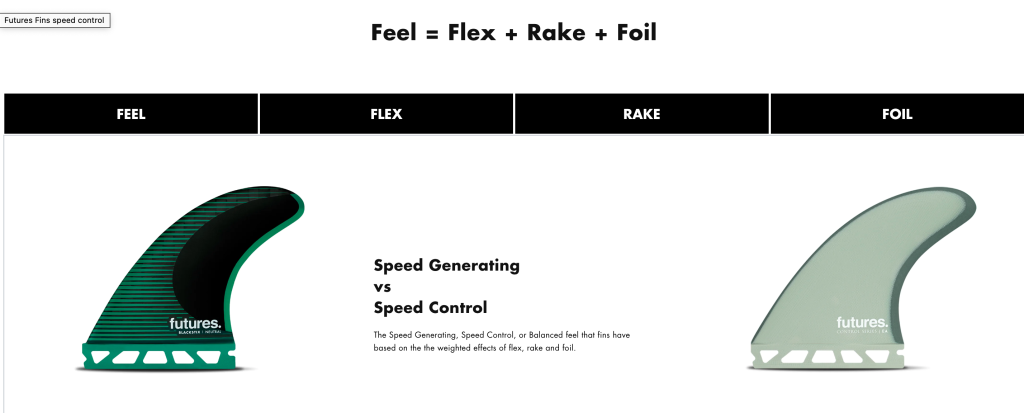
Bending
More flexible fins will feel springy in turns and give a feeling of speed generation, while stiffer surf fins will feel solid in turns and give a feeling of speed control.
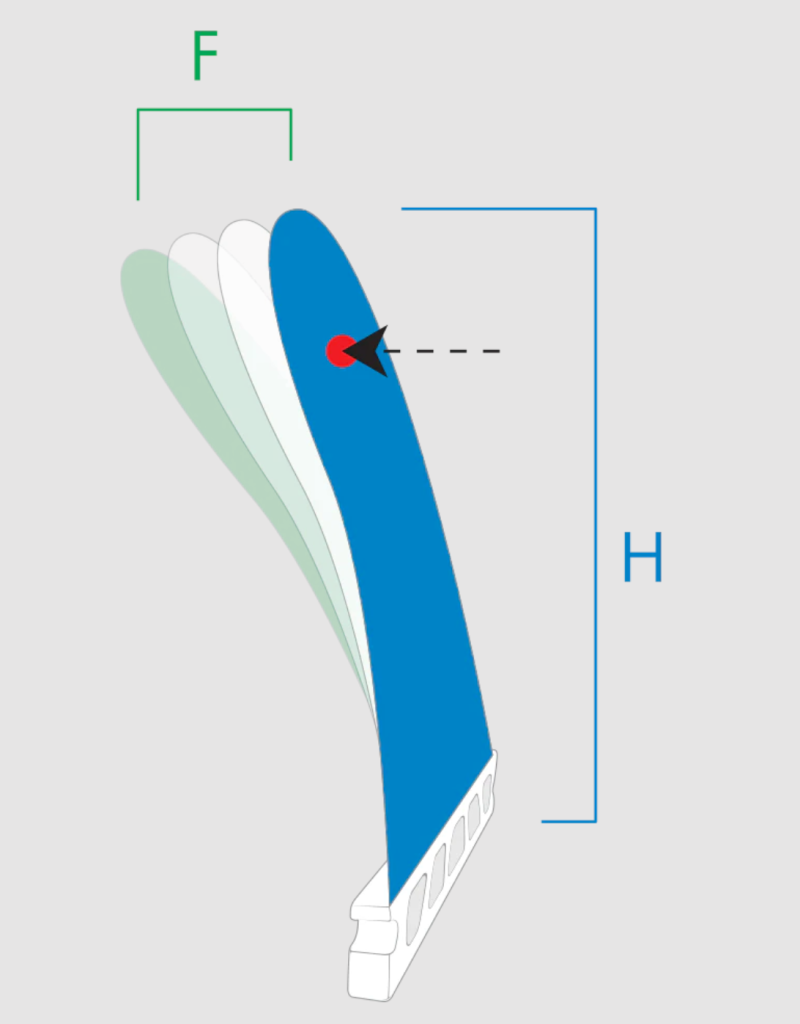
This factor is the most important in determining the Futures Fins rider number.
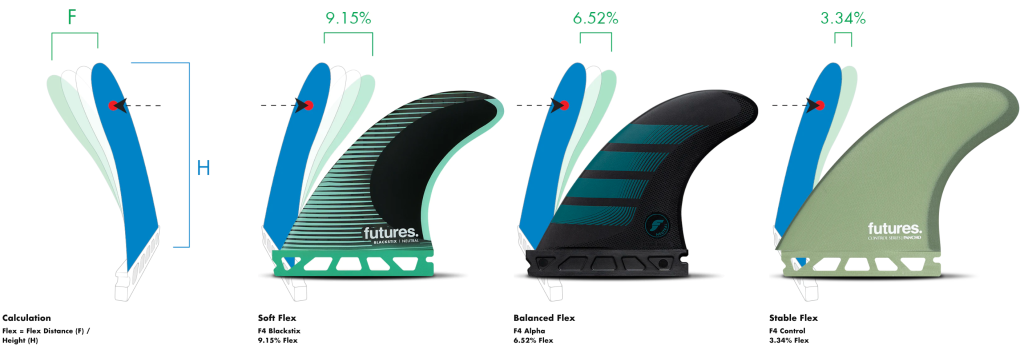
Rake
The more cant a fin has, the longer and wider the maneuvers will be. The more vertical the fin is, the more pivoting it will feel. Fins with a higher cant (saliency) will be more stable, while those with less cant are more suitable for surfing in bags or tubes.
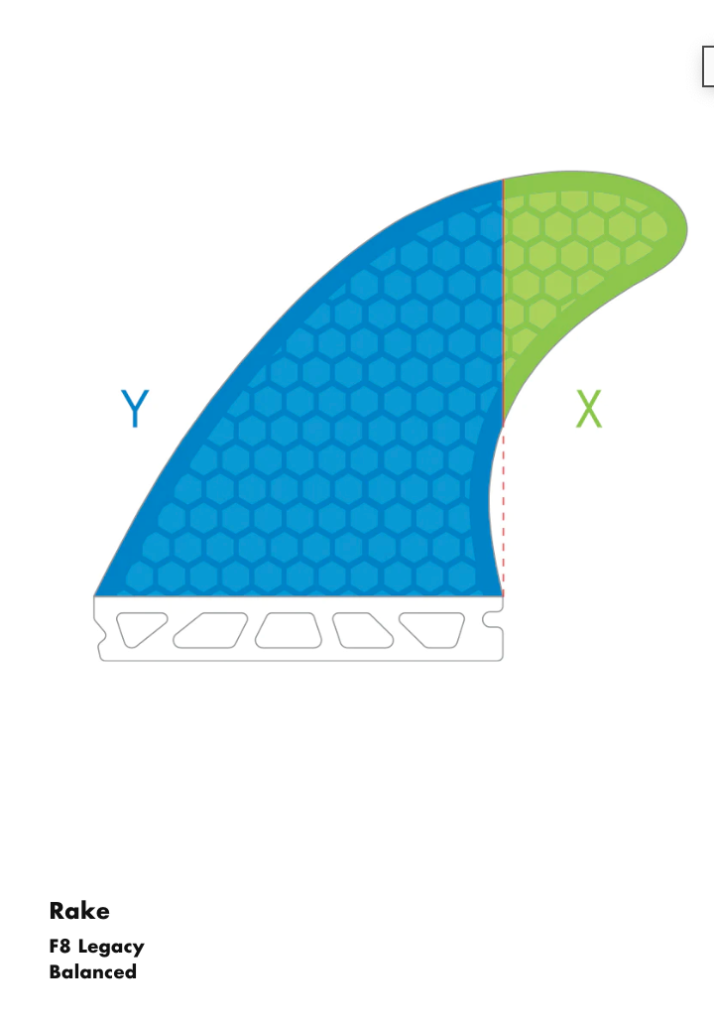
Futures Fins Rake: Upright Rake vs Laidback Rake
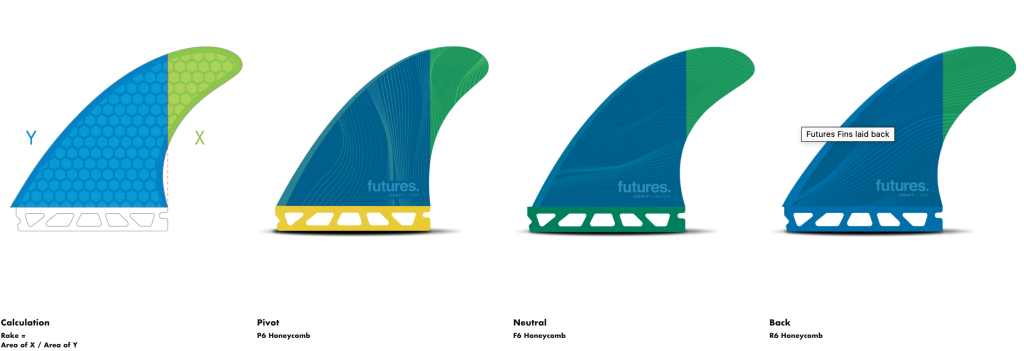
The vertical fins feel pivoting, allowing for tighter turns and giving them a speed-generating feel. Raked fins feel stable, providing grip in turns and a feeling of speed control. Pitch is an important factor in determining the Rider number of Futures Fins.
Single Fin Foil (Profile)
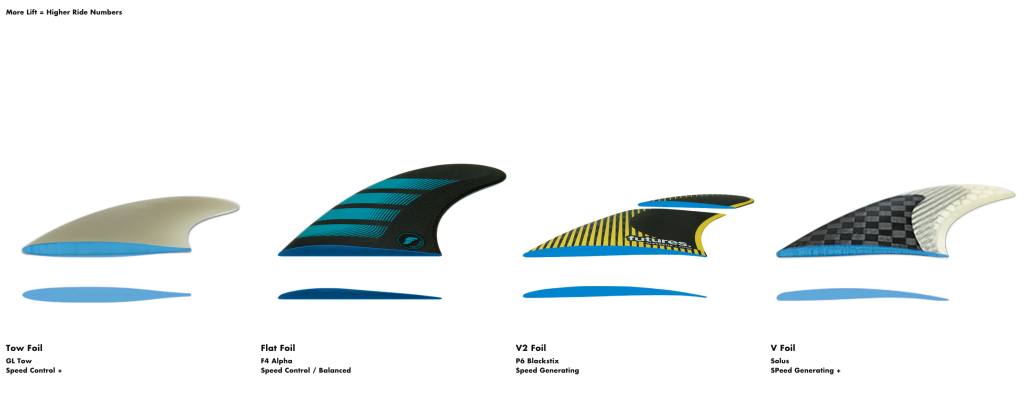
Profile V2
It provides momentum in bottom turn maneuvers, but releases at the lip like a flat fin. A V2 profile is a combination of V-profile and flat profile. It combines the best speed-generating characteristics of the V-profile (at the base) and transitions to a flat profile at the tip for controlled release in critical maneuvers. The V-profile fins feel fluid and offer momentum, generating more speed during bottom turns.
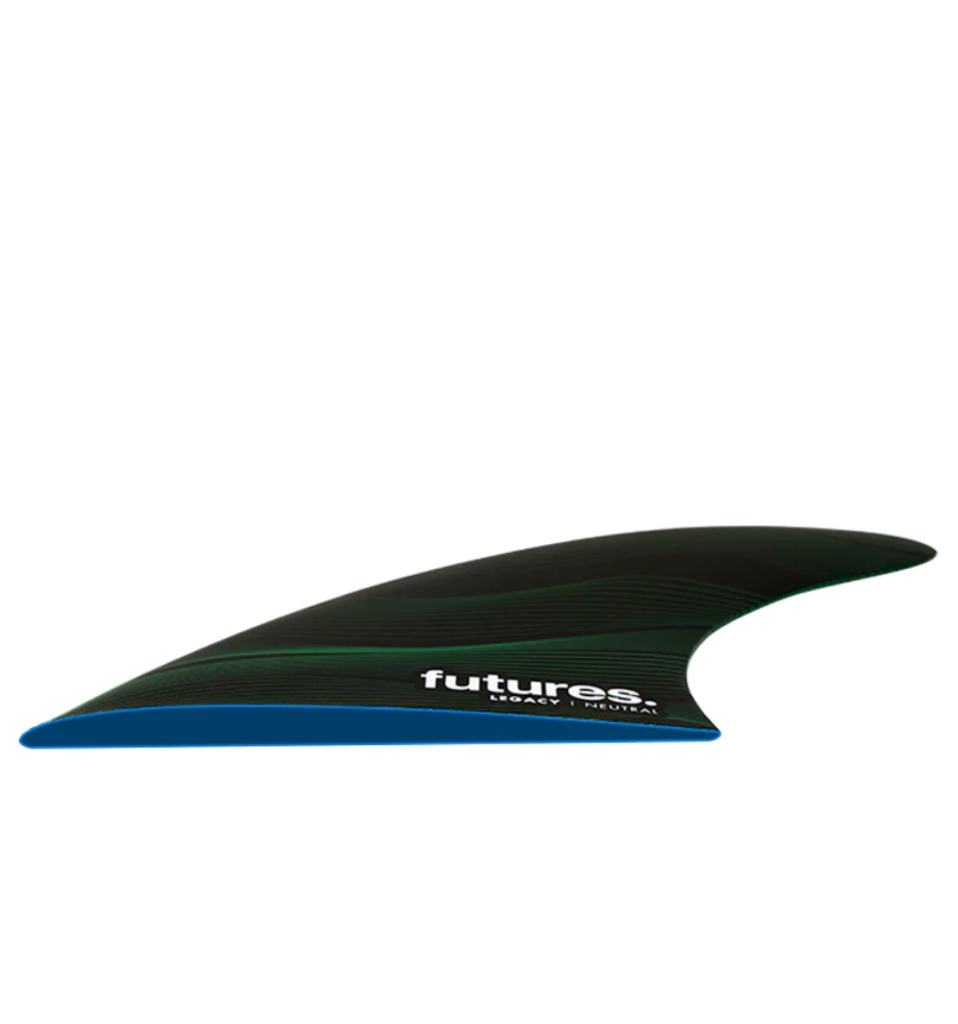
V shaped profile
Perfect for gaining speed if you have trouble finding it. Smooth transitions from rail to rail. V-profile fins are designed to maximize lift with a minimal amount of drag. Fins with this V-profile will help you discover speed you didn’t know you had or give you that extra boost to really find the momentum on your bottom turns. The leading edge of the fin is more rounded, allowing more water to flow from any angle of attack and making it feel very fluid from rail to rail.
Plain profile
Flat profile fins release sooner and are better at controlling speed. They are often preferred by surfers in fast, powerful waves where they do not need to generate additional speed.
V2 Foil vs Flat Foil
V and V2 foils are responsive and fluid in turns, giving them a feeling of speed generation. Flat foils feel engaged and predictable in turns, giving them a feeling of speed control. The effects of the Foil on the overall feel of the Ride Number are subtle but noticeable, therefore the Foil has the least amount of weight in the Ride Number.
So much for our futures fin buying guide. We hope you found it useful, do you have any questions? Leave us a comment and we will be happy to help you.
